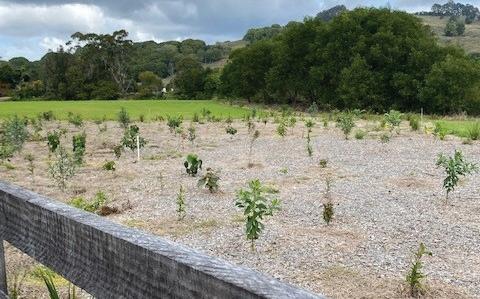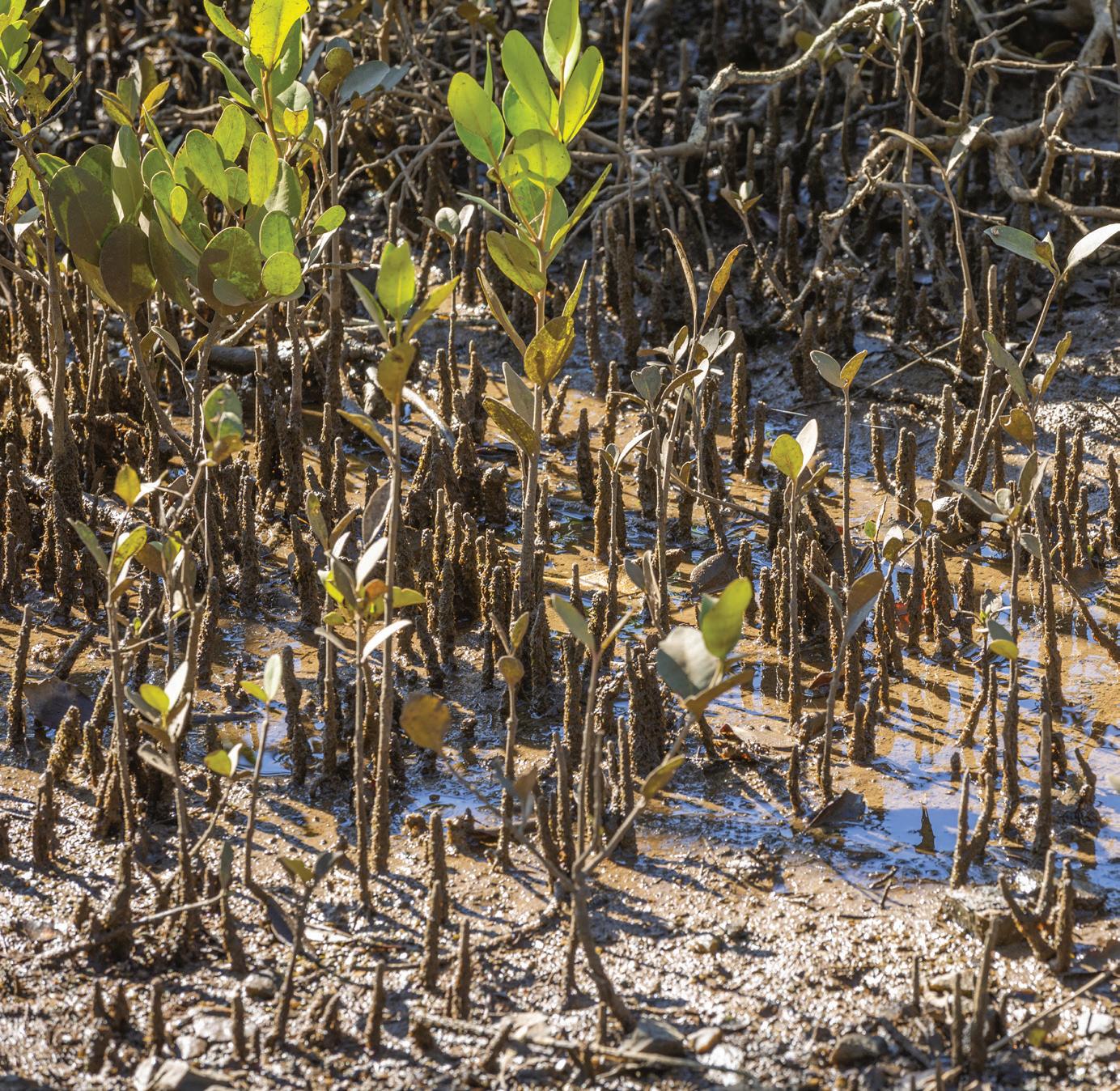
4 minute read
HEALTHY WATERWAYS PROGRAM UPDATE
Council's Healthy Waterways Program aims to work with the community to develop and implement projects to improve catchment condition as well as the environmental, cultural, social and economic values of the Ballina Shire.
Recent Riparian Restoration Projects
Riparian planting and weed removal have been completed along a 250-metre stretch of Houghlahans Creek on Council-owned land at the Northern side of Tintenbar Road, with 3,800 trees and shrubs planted.
Weed removal and riparian planting has been undertaken at the confluence of Houghlahans and Maguires Creek at Teven Reserve.
Council will be starting a riparian restoration project along a large stretch of Maguires Creek to build upon and create connectivity to existing riparian restoration projects.
Coastal Management Programs
Shaws Bay
Community consultation for the Shaws Bay Coastal Management Program (CMP) stage 1 scoping study was completed in mid-July, with 186 responses received.
The survey results have informed a first pass risk assessment to identify the primary threats and stressors to the values of Shaws Bay. This risk assessment will help to inform the next stages of the CMP. For more information visit yoursayballina.com.au/shaws-bay-coastalmanagement-program
Interpretive signage indicating some of Shaws Bay’s environmental values has been installed along the foreshore pathway. Design of a large interpretive sign is in the final stages and is due to be installed by the end of 2023.
North Creek
The North Creek Coastal Management Program (CMP) stage 2 studies, including a Hydrological Model and Water Quality Monitoring, are on hold while Council’s awaits important CSIRO post-flood data to input into the model.
Ballina Shire Coastline
Stages 2-4 of the Ballina Coast and Lower Estuary CMP will commence soon. These stages will build upon the stage 1 scoping study and include stage 2 studies to inform stages 3 and 4. This will comprise a Coastal Hazard Study and Risk Assessment, Coastal Geotechnical Hazard Study and Risk Assessment, Coastal Vulnerability Area mapping and Coastal and Estuarine Habitat and Biodiversity Study.
Lake Ainsworth
The riparian vegetation project at Lake Ainsworth is well underway with weed removal undertaken across all areas and planting ongoing to replace plant losses and increase endemic plant numbers.
The aerator trial project has been completed with a final recommendation to undertake aeration 24 hours per day during peak periods of algae growth to improve water quality and limit blue green algae growth in the Lake.
Richmond River CMP
Consultation is ongoing with Rous County Council in relation to the development of Richmond River CMP of which the stage 1 scoping study is now complete.
Other Projects
Council is looking into several sites within the Ballina Shire to implement CoastSnap – a citizen science initiative where the community and visitors can snap a photo at a CoastSnap location and add it to a database. This assists to map shoreline change and understand how different beaches respond to changing ocean conditions.
Council has recently adopted the Illegal Dumping and Litter Prevention Strategy that includes an aim to improve waterway health by limiting litter impacts. The strategy includes actions to minimise waste such as cigarette butts, fishing related litter, microplastics and other litter entering our waterways. These actions will be progressively implemented over the next five years.

For more information visit ballina.nsw.gov.au/healthy-waterways

It’s totally natural
Around July to November each year mangroves in Ballina Shire can give off a rotten-egg-like odour.
The odours are from a natural process where organic matter, such as mangrove seeds and their pods, break down. Bacteria living in the mangrove soil perform the decaying process. During this process oxygen is used, but when all the available oxygen is used up, sulphur is used instead.
A by-product of the sulphur reaction is hydrogen sulphide, which is the gas responsible for the rotten egg or sewage-like smell.
Mangrove wetlands are essential to the environment and vital to the lifecycle of plants and animals by providing a habitat for spawning and juvenile fish, prawns, and crabs. They are also important roosting and feeding areas for birds.
Factors that influence odour intensity include: how close you live to a mangrove area wind speed and direction seasonal factors, such as rainfall and tides yield of mangrove seeds air temperature, especially at night.
For more information visit ballina.nsw.gov.au/seasonal-mangrove-odours










